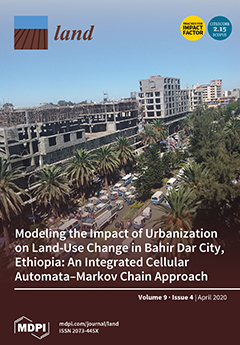Resource information
Over the past few decades urbanization and population growth have been the main trend all over the world, which brings the increase of economic benefits (EB) and the decrease of cropland. Cropland protection policies play an important role in the urbanization progress. In this study, we assess the trade-offs between EB and ecosystem services value (ESV) under three cropland protection policy scenarios using the LAND System Cellular Automata for Potential Effects (LANDSCAPE) model. The empirical results reveal that trade-offs between EB and ESV in urbanizing areas are dynamic, and that they considerably vary under different cropland protection policy scenarios. Especially, the results identify certain “turning points” for each policy scenario at which a small to moderate growth in EB would result in greater ESV losses. Among the three scenarios, we found that the cropland protection policy has the most adverse effect on trade-offs between EB and ESV and the results in the business as usual scenario have the least effect on the trade-offs. Furthermore, the results show that a strict balance between requisition and compensation of cropland is an inappropriate policy option in areas where built-up areas are increasing rapidly from the perspective of mitigating conflict between EB and ESV and the numbers of cropland protection that restrained by land use planning policy of Wuhan is a better choice.


